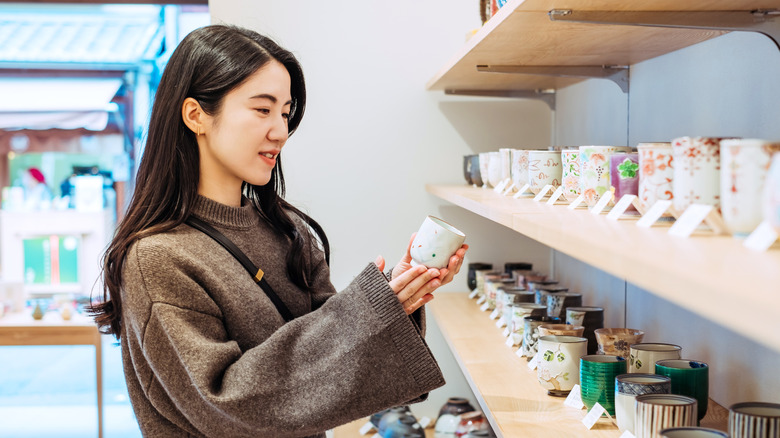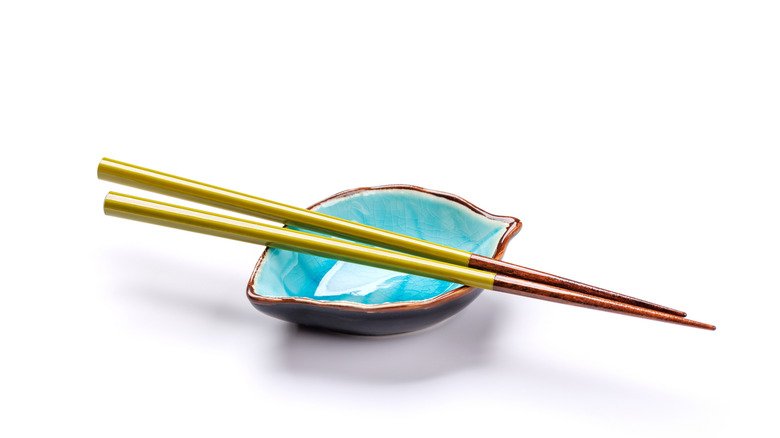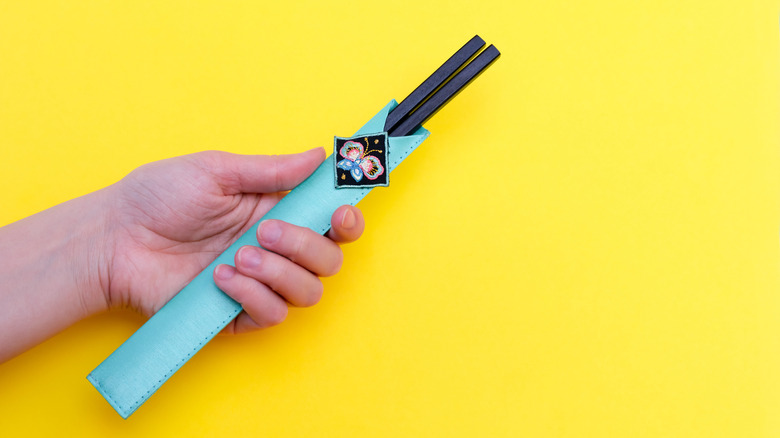Tourists Should Consider Buying This Unique And Eco-Friendly Souvenir In Japan
What gifts should you buy for the folks back home? For that matter, what souvenir should you pick up for yourself? In Japan, the options may overwhelm you. A silk komono? A replica samurai sword? A calligraphy set? A waving cat sculpture? All of these sound attractive, but you can only stock up on so much green tea or Hello Kitty bags before you run out of space in your luggage — or max out your credit card, whichever comes first. There are other challenges, too: Japanese pottery is famous, but such delicate bowls and mugs may crack during transport. Sushi knives are razor-sharp, which may raise eyebrows at the airport. Electronics can be fun, but they may use plastic and wiring that are lousy for the environment.
If your tastes are simple or your funds are low, there are lots of budget-friendly souvenir ideas to consider for your next trip. But there's one item that is useful, affordable, and thoughtfully reflects Japanese culture. You can find this item anywhere, sort through endless variations, and easily pack it for your return journey. The item? Chopsticks.
To most Westerners, chopsticks remain an unusual eating instrument, reserved for specific occasions. While plenty of Europeans and Americans can wield chopsticks with confidence, forks are the go-to utensil for solid foods, followed by shallow spoons. Westerners might request a pair of disposable wooden chopsticks at an East Asian restaurant — for plucking up pieces of sushi or slurping up pho — but the implements remain special, a symbol of a faraway place and way of life.
The art of Japanese chopsticks
It's hard to fathom how old chopsticks are: They first appeared in China about 5,000 years ago, before the ancient Egyptians started building the Pyramids of Giza. Chopsticks came to Japan much later, in the 7th century, and became popular among the nobility; over the next few centuries, chopsticks trickled down to the lower classes as well, until they became everyday household items. For the past 1,500 years, Japanese families have used chopsticks to eat rice, meat, and vegetables. While foreigners may assume that all chopsticks are the same, the Japanese version tends to be more pointed than the Chinese or Korean variety, which theoretically helps eaters negotiate tiny fishbones.
Chopsticks grace tables across East Asia, from Mongolia to Vietnam, but the Japanese take particular pride in them. The city of Obama is a powerhouse of chopstick manufacturing, and by some estimates this one city churns out 70% of the world's "painted" supply. Unlike the plain bamboo versions you receive at a cheap noodle joint, painted chopsticks are durable, colorful, and shiny. The lacquered surfaces boast multiple hues or even detailed pictures. More than just something to eat with, the finest chopsticks can cost hundreds of dollars and are considered functional works of art.
Using chopsticks in Japan is also an art, as they come with their own etiquette. You should never let your sticks jut out of a pile of rice, nor should you rub them together or let them rest on top of each other. These are just some of the things tourists should never do when visiting Japan.
Chopsticks: The gift that keeps on giving
Obviously, chopsticks are compact and easy to carry, which is a boon for light travelers. They also come in a wide range of pouches and cases, which can be just as attractive as the tools themselves. Chopsticks are the definition of simple elegance, and it's hard to imagine having too many of them. As long as you hand wash the chopsticks and rotate through several pairs, you could use the same sets for years on end. Most Japanese chopsticks are made from wood or bamboo; both are renewable resources, and bamboo is among the greenest and most versatile materials on the planet.
There's another reason you might want to invest in a pair of quality chopsticks while visiting Japan: You can use them as you travel. Unlike most souvenirs, which you might use to decorate or as a conversation starter, you can incorporate chopsticks into just about every meal. This is especially helpful when you're buying a to-go meal from 7-Eleven or unique local delights from Japan's bustling seafood market — and you dislike the idea of adding disposable chopsticks to the landfill. Even rookies should expect to adapt to chopsticks in a few days, and there's no better way to pull ramen out of broth or lift sashimi from a plate. Wishing your chopsticks would last forever? Many are made from titanium and stainless steel.


